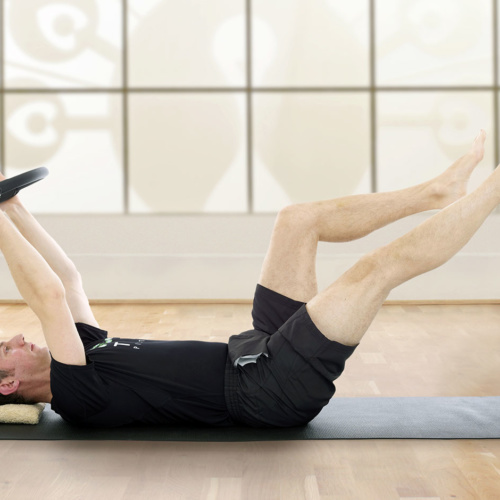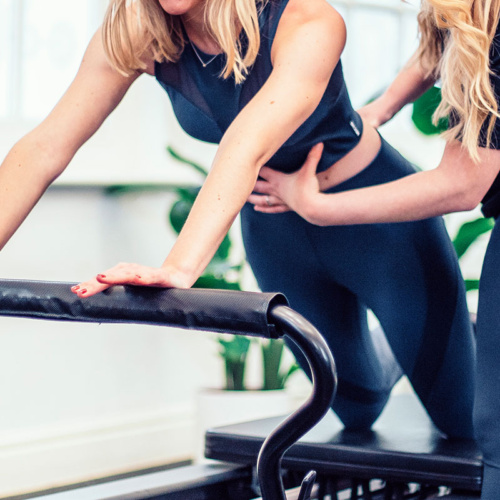Pilates and Barre have been intertwined disciplines from the very beginning of the history of Pilates. When he moved to the United States in the 20’s Joseph Pilates was called upon by some of the best dancers and their coaches in the US to be ‘fixed’ – preferably as quickly as possible. So, the very development of Pilates was influenced by the needs of some of the best dancers in New York at that time, whose needs for injury-proof, flexible, controlled physiques helped inform and refine the exercise method Joseph Pilates was in the process of developing, and which now keeps people around the world moving more effectively, more efficiently, with less risk of injury – and just like dancers – more gracefully.
In this article we’re going to take a brief look at what both disciplines are and their history, to understand some of the benefits to be gained from incorporating both Barre and Pilates into your movement practice, and to understand how students of both exercise classes can progress technically by combining these two training methods.
I’ll then share some specific exercises / movements that illustrate how these transferable skills could give your exercise regime the boost that it needs to reach the next level in your health and fitness journey.
The Basics
First of all, let’s take a look at some basic definitions of what each disciplines are:
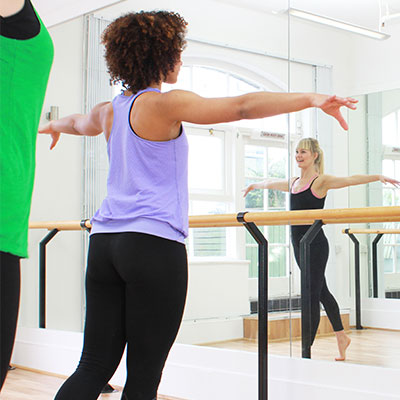
What is Barre?
Barre fitness is a mode of exercise derived from the first component of a traditional ballet class. Dancers have always pushed their bodies to the absolute limits, and these exercises were initially designed as the preparation phase of class, to perfect technique and to allow them to move safely when performing high impact choreography.
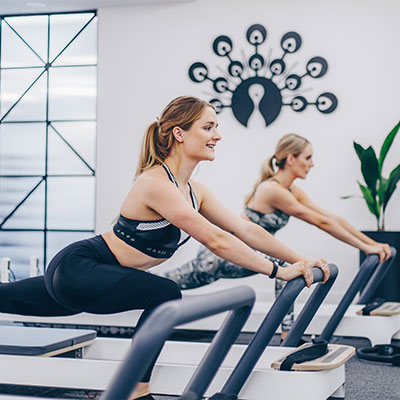
What is Pilates?
Pilates is an exercise method developed by Joseph Pilates and is based on five central principles:
Centre
Using the core muscles to balance the body.
Breath
Using the most efficient breathing pattern to exchange gases and get the oxygen required for effective muscle activation and movement.
Flow
Performing movements that transition smoothly between one another.
Precision
Focussing on the accuracy of movements and body placement; ensuring that every part of the body is properly aligned.
Control
A focus on the importance of stability as much as strength, every movement must be purposeful and measured.
What is the relationship between Pilates and Barre?
If you have ever attended a ballet class, been lucky enough to see a ballet performed in the theatre (or in fact watched a dancer of any genre perform), you will notice that this discipline requires the same fundamental elements as Pilates: Centre, Breath, Flow, Precision and Control. The similarities between the two are no coincidence; the relationship between dance and Pilates dates back to some of the earliest days of Joseph Pilates’ methodology.
The long relationship between Pilates and Barre
Joseph Pilates travelled to America with his exercise method ‘Contrology’ which would later become known as Pilates in 1925. Once there, he took over a gym which was surrounded by dance studios and rehearsal spaces in New York and soon after came to be a friend and trainer to many of the most renowned dancers and choreographers of their time – the former of which were often sent to him to be ‘fixed’.
His work was somewhat of a revelation in the dance world and it took off like wild fire. There are several ‘Elders’ of Pilates, who Joseph trained personally, and who went on to become his protégées and to develop his work after his death. Many of the famous Pilates Elders were themselves professionally trained dancers. Two of these Elders were privileged enough to be personally certified to teach in his name, and a third was entrusted with his studio after his wife’s retirement. With the evolution of Pilates happening in the hands of talented and extensively trained classical dancers, it’s really no wonder that we see such an overlap between these exercise forms today.
How do they complement each other/why should you do both
Like Pilates, Barre is designed to give us better posture and core stability and a long, lean muscle tone (It’s also great for pumping the glutes!). Complementing it with Dynamic Reformer Pilates is a brilliant example of how an understanding and regular practice of key Pilates principles can bridge gaps and accelerate your progress in other exercise disciplines, and even your day-to-day movement.
Training in a Barre environment gives the body more opportunity for fluid, functional movement, challenging the body to remember what it has learned about alignment and centring on the Reformer and applying it to a standing, weight-bearing situation more akin to the way we move throughout the day.
A clear example of the transferable nature of these skills is an exercise that any regular in our Dynamic Reformer Pilates class will be familiar with – the double leg press in the loops, which we can perform either in a parallel position or in a ‘frog’ position, as shown below.
In a Barre class, these are called pliés. The same details to the movement apply, except now your resistance is gravity, we need to find the same hip/knee/ankle/foot alignment while bearing the weight of our bodies and using our core to hold the rest of the body in a neutral position.
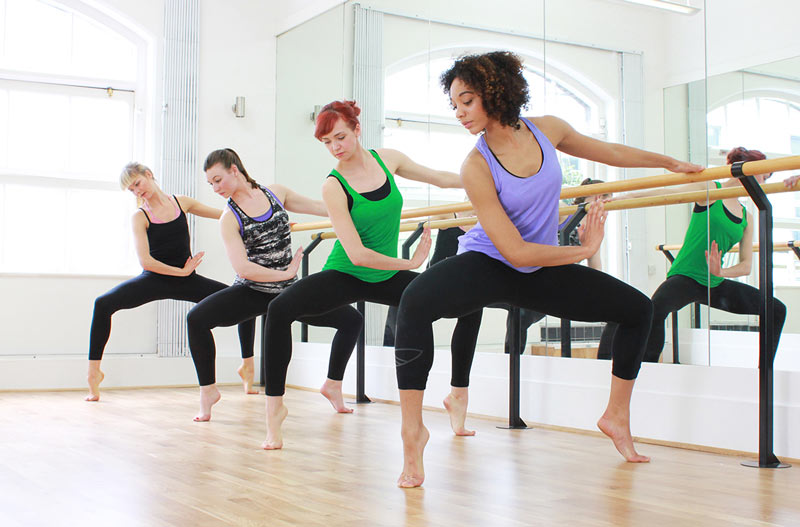
This leads onto the functional part of these classes, this is a movement that we all do every day, sitting into our office chairs, getting in and out of vehicles, lifting boxes or collapsing on the sofa with a cup of tea at the end of the day. It’s important that our muscles learn to apply their knowledge throughout the day and not just in the studio.
Of course the best way to discover and understand the benefits of both is to experience them for yourself in a class, or with a Personal Trainer with an understanding of both disciplines.
If you’re interested in Pilates based Personal Training tailored to the needs of dancers then please do get in touch with your closest Studio who can recommend a trainer.


